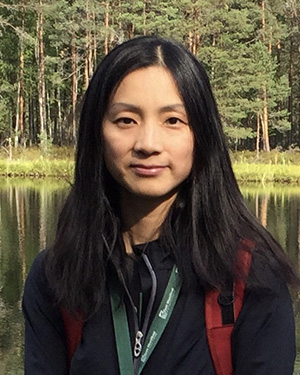During the last two decades, almost 1,000 hydropower dams have been built around the globe. And while these dams provide many benefits to farmers, wildlife and the climate, the costs of their construction on local communities where they are built has largely been left out of the conversation - that is, until now.
Led by Peilei Fan (pictured left), a team of six MSU social scientists — including doctoral student Myung Sik Cho, and professors Zihan Lin, Jiaguo Qi, Jiquan Chen and Emilio Moran — and Stanford University researcher Zutao Ouyang found that despite the overall positive impact that hydropower dams have on the globe and countries as a whole, communities in the immediate areas surrounding dams often experience worse economic conditions, population relocation and/or a loss of green spaces due their construction.
For this research, the team analyzed 631 hydropower dams, all built since 2001 and commissioned before 2015, across five regions: Africa, Asia, Europe, North America and South America. The study, published in the "Proceedings of National Academy of Sciences (PNAS)," highlights a need to address these disparities to reduce harm to local communities in the surrounding areas.
Fan was inspired to lead this research after visiting two separate areas where dams were recently constructed, and seeing the sudden change that was inflicted on surrounding local people. One was a 2015 visit to Tonle Sap Lake in Cambodia, and the other was a 2018 visit to the Mekong River Basin in Laos.
"The residents, relocated several years ago, seemed to have a better life than before, but they were still anxious and uncertain about their future," Fan said. "Talking to the people whose lives have been changed because of the dam construction made me realize that most existing evaluations are mostly case studies on large dams, and there lacks a comprehensive analysis at a global scale, including small- and medium-sized dams."
To read more, visit socialscience.msu.edu
